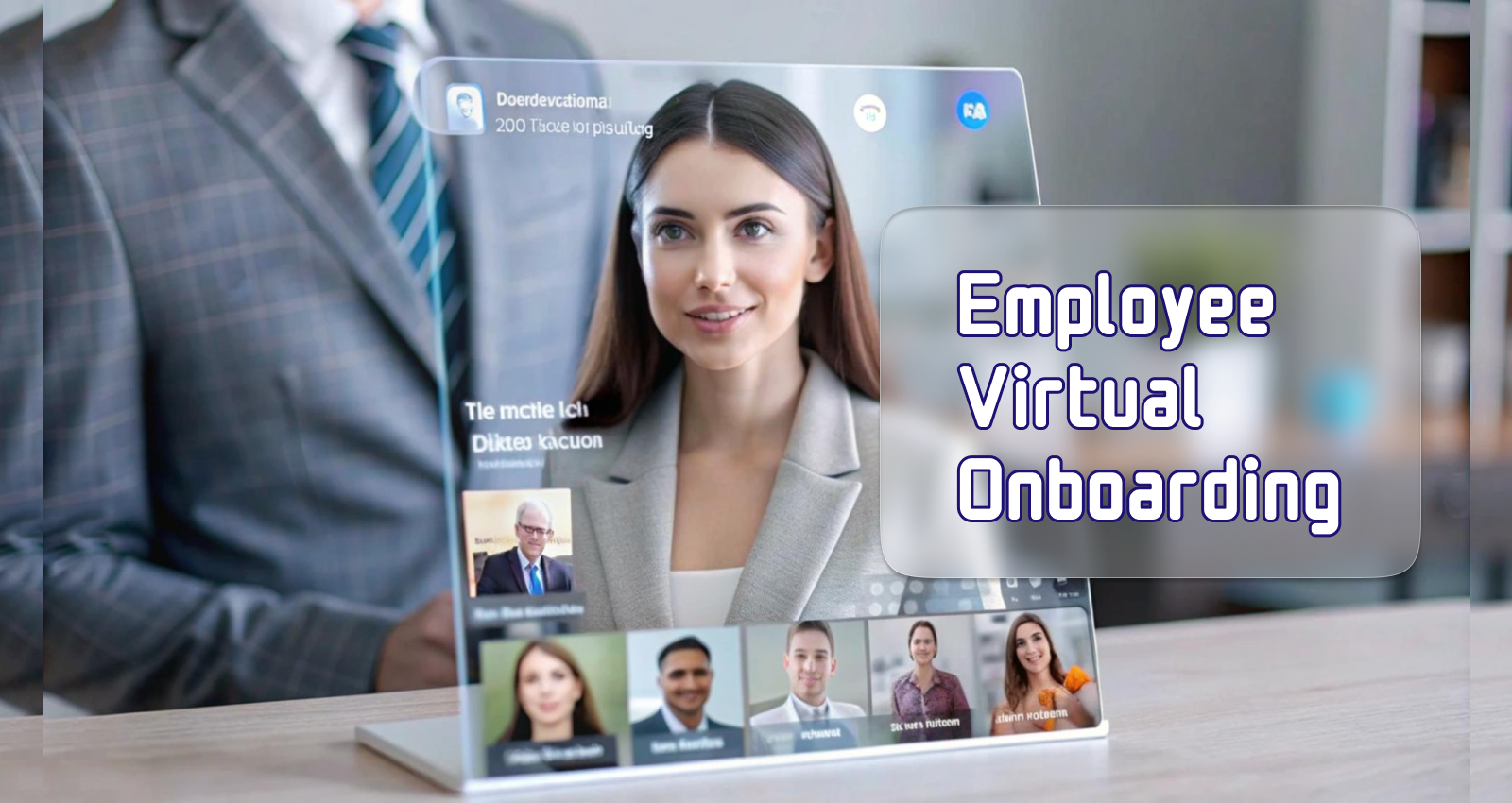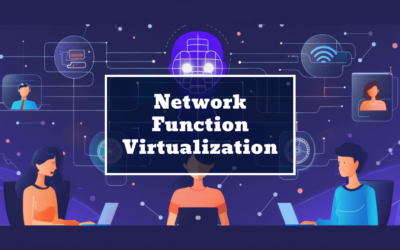Employee Virtual Onboarding & Best Practices

Introduction:
In today’s digital age, the way we work has transformed, and so has the process of welcoming new employees to a company. Traditional in-person onboarding has taken a backseat, making way for the rise of virtual onboarding programs.
In this blog, we’ll dive into the world of virtual onboarding, its benefits, and the best practices you need to know to successfully onboard employees virtually.
What is Virtual Onboarding?
Virtual onboarding is a process that allows companies to welcome, integrate, and train new employees remotely, using digital tools and technology. It involves leveraging various online platforms and resources to provide a seamless and engaging experience for new hires, even when they are not physically present in the office.
Difference between Virtual & In-person Onboarding
While the end goal of both in-person and virtual onboarding is the same—to help new employees feel comfortable and ready to contribute—the methods and experiences differ significantly.
In-Person Onboarding:
- Involves face-to-face interactions.
- Usually takes place at the office.
- Employees can physically explore the workplace.
- Immediate personal connections can be established.
Virtual Onboarding:
- Relies on digital communication tools.
- Can happen from anywhere, even remotely.
- Employees explore the company digitally.
- Requires intentional effort to build personal connections.
Benefits of Virtual Onboarding:
1. Increased Employee Retention: Employee retention is like having a strong foundation for your company. When you onboard new employees virtually, you provide them with a positive and efficient start. This makes them feel valued and connected to the company right from the beginning.
When people feel appreciated and part of the team, they are more likely to stay for the long haul. Virtual onboarding sets the stage for a lasting relationship between employees and the company.
2. Better Engagement: Imagine a puzzle coming together perfectly. Virtual onboarding pieces together a smooth and interactive experience for new employees. It introduces them to the company culture, goals, and values in an engaging way.
Through interactive videos, presentations, and online activities, new hires become active participants in their learning journey. This engagement boosts their excitement and commitment to the company, which is reflected in their work.
3. Greater Productivity: Productivity is like a well-oiled machine and virtual onboarding plays a role in keeping it efficient. When new employees are onboarded virtually, they can start their roles sooner without the delays of travel and logistics.
They learn about their tasks and responsibilities from the comfort of their own space. This quicker start means they can contribute to the company’s goals sooner, helping the team achieve more in less time.
4. Cost-efficient: Cost-efficiency is like making smart financial decisions. Virtual onboarding saves the company money by eliminating the need for travel, accommodation, and physical resources associated with traditional onboarding.
This budget-friendly approach still delivers a comprehensive and valuable onboarding experience. These saved resources can be redirected to other areas of the company, making virtual onboarding a strategic financial choice.
5. More Flexibility: Flexibility is like having options that suit different needs. Virtual onboarding offers flexibility for both the company and new hires. Employees can participate in onboarding from anywhere, accommodating remote work or various time zones.
This flexibility allows companies to hire top talent regardless of location. It also respects the diverse needs of new employees, making the onboarding process more inclusive and accessible.
Best Practices for Virtual Onboarding:
1. Create a Detailed Onboarding Plan: When it comes to onboarding new employees virtually, having a clear and detailed plan is like having a roadmap. This plan outlines all the important steps, timelines, and who is responsible for what. Think of it as a helpful guide for both the HR team and the new hires. Using keywords like “Virtual Onboarding Program” and “Best Practices for Virtual Onboarding” in your plan can make sure everyone knows what’s happening and when.
2. Provide Clear Communication: Communication is key, especially when everyone is not in the same physical place. Regularly talk to the new hires about what they can expect, when things will happen, and where they can find important resources. This clear communication helps everyone stay on the same page and reduces any confusion. Using those targeted keywords in your messages can also make sure the information is easy to find and understand.
3. Use Interactive Welcome Materials: Make the new employees feel like they’re part of the team right from the start. Use interactive materials like videos, presentations, and virtual tours to show them what your company is all about. These materials are like a fun introduction and help new hires feel connected, even if they’re not in the office. Remember to include those keywords in your materials so that they show up when people search for virtual onboarding tips.
4. Assign a Dedicated Mentor: Imagine having a friendly guide to help you navigate a new place. That’s what a dedicated mentor does for new hires during virtual onboarding. This person is like a buddy who answers questions, provides support, and makes the transition smoother. Don’t forget to mention “Onboarding Employees Virtually” and “Virtual Onboarding And Training” when you talk about this mentorship program online.
5. Deliver Engaging Training: Learning can be fun, especially if it’s done in different ways. Use webinars, e-learning modules, and interactive workshops to teach new employees what they need to know. This way, they can learn at their own pace and enjoy the process. When you share these training options online, using those keywords will help others find your valuable training resources.
6. Leverage Technology: Technology is like a tool that makes things easier. Use video conferencing, collaboration platforms, and online training tools to help new hires connect, learn, and work together, even when they’re not in the same room. Mentioning “Virtual Onboarding Program” and “Best Practices for Virtual Onboarding” when you explain these tech tools can guide others to the right resources.
7. Encourage Social Interaction: Feeling part of a team is important, even when everyone is far apart. Organize virtual team-building activities, coffee chats, and networking sessions to help new employees connect with their colleagues. These interactions create a sense of belonging and make the onboarding experience memorable. Sharing these activities online with the targeted keywords can attract more attention to your virtual onboarding efforts.
8. Feedback and Adaptation: Listening to feedback is like fine-tuning a musical instrument. Regularly ask new hires how their virtual onboarding experience is going and what could be improved. This way, you can make changes that will help future employees have an even better experience. When you talk about this feedback loop online, include the keywords to reach those searching for ways to improve their virtual onboarding.
Conclusion:
As the way we work continues to evolve, virtual onboarding has become a pivotal aspect of integrating new employees into a company’s culture and operations. With its flexibility, cost-efficiency, and wider reach, virtual onboarding is here to stay.
By following the best practices outlined above, you can ensure that your virtual onboarding program is successful, and engaging, and sets the stage for a positive employee journey within your organization.
Are you looking for any IT Services such as Web design and Development, Professional/Staff Augmentation Services, Cloud Computing, Mobile App Development, Digital Marketing Services, and more? Connect Stridefuture Technology, which helps to meet your requirements.
{StrideFuture Technology, a full-service company specializing in Software Solutions and Consultancy services. We specialize in Personal, Business, IT Services, Web design and Development, Mobile App Development, Digital Marketing Services, and much more you can dream Virtually with us! Reach out for more service at StrideFuture Technology.}









